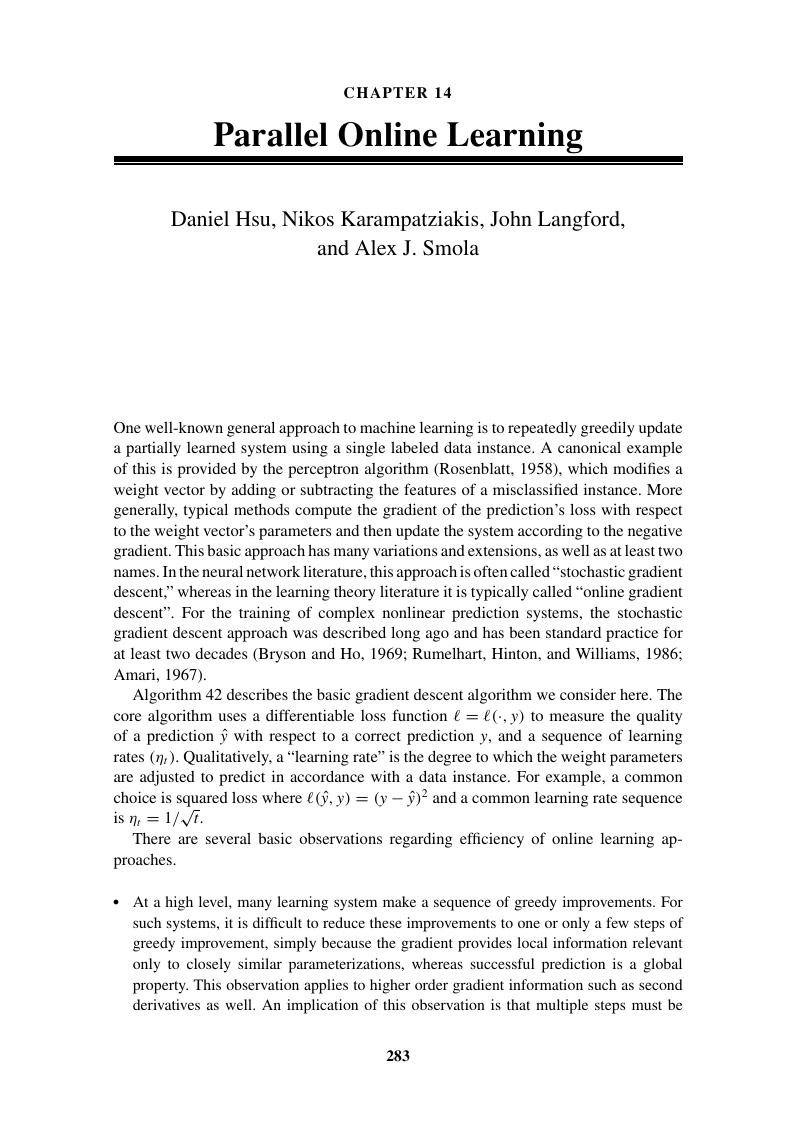Book contents
- Frontmatter
- Contents
- Contributors
- Preface
- 1 Scaling Up Machine Learning: Introduction
- Part One Frameworks for Scaling Up Machine Learning
- Part Two Supervised and Unsupervised Learning Algorithms
- Part Three Alternative Learning Settings
- 14 Parallel Online Learning
- 15 Parallel Graph-Based Semi-Supervised Learning
- 16 Distributed Transfer Learning via Cooperative Matrix Factorization
- 17 Parallel Large-Scale Feature Selection
- Part Four Applications
- Subject Index
- References
14 - Parallel Online Learning
from Part Three - Alternative Learning Settings
Published online by Cambridge University Press: 05 February 2012
- Frontmatter
- Contents
- Contributors
- Preface
- 1 Scaling Up Machine Learning: Introduction
- Part One Frameworks for Scaling Up Machine Learning
- Part Two Supervised and Unsupervised Learning Algorithms
- Part Three Alternative Learning Settings
- 14 Parallel Online Learning
- 15 Parallel Graph-Based Semi-Supervised Learning
- 16 Distributed Transfer Learning via Cooperative Matrix Factorization
- 17 Parallel Large-Scale Feature Selection
- Part Four Applications
- Subject Index
- References
Summary

- Type
- Chapter
- Information
- Scaling up Machine LearningParallel and Distributed Approaches, pp. 283 - 306Publisher: Cambridge University PressPrint publication year: 2011
References
- 6
- Cited by



